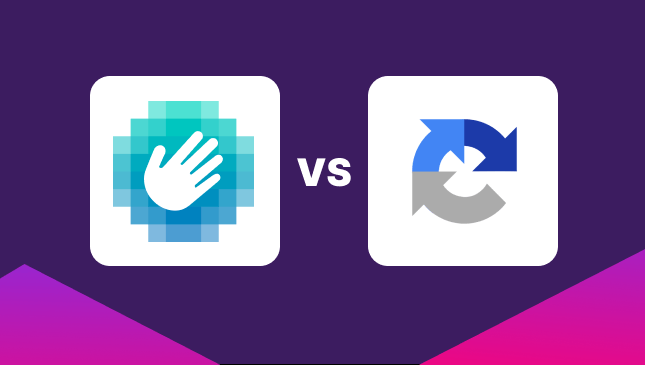What Is Cost Per Lead and How Do You Calculate It?
Ilan Missulawin
|Marketing | August 01, 2021

There are many different ways to generate sales and find new customers online using a variety of advertising options. Cost per click isn’t always suitable, depending on your business model. So, is cost per lead (CPL) a better choice? And what is the definition of cost per lead anyway?
What is Cost Per Lead?
When using advertising campaigns online to find customers, many think of the pay-per-click model. Where an advert is placed, and an interested customer clicks on the ad, goes to your site, and may or may not make a sale.
But with cost per lead, you’re not necessarily aiming to make that sale right away. You’re looking to curate a list of interested parties to whom you can contact and potentially offer your services.
Customers will usually complete a sign-up form in return for something of use, such as an ebook, newsletter, webinar, or other services that show they are interested in the industry in question.
With both cost per lead and cost per click, you’re running a general campaign to boost your visibility. The difference is that with cost per click (CPC), you’re aiming to see more clicks on it, while with cost per lead (CPL), you want to get more leads.
For example, instead of using a Google CPC (cost per click) campaign, you could use a CPM (cost per mile) to maximize exposure and see how many leads you receive.
Your ad campaign could also include other marketing avenues, such as direct marketing, trade shows, leafleting campaigns, or any other channel where you’re prospecting for contact details instead of instant sales.
How to Calculate Cost Per Lead
As cost per lead can be measured across your entire ad campaign, there are several ways to calculate the actual cost per lead.
- Add up your total marketing spend across all relevant channels for a set time period.
- Add up the total number of new leads gained within the same period.
- Divide the total marketing spend by amount of new leads.
Another way to visualize this is:
Total marketing spend / New leads = Cost per lead
If you are keeping track of which channels are bringing the most leads, you can also work out the cost per lead from each of these individually.
Google Ads CPM total in January/New website leads in January = Cost per lead online
Running an online CPC campaign can often subject you to bots and automated click fraud or ad fraud, which can distort your cost per lead.
For example, spam bots can be programmed to locate and fill out forms on specific websites. Captchas offer a level of protection that can filter out the simpler bots, and Google Ads (aka Adwords) do have some protections in place to negate bots. But with bot technology developing every day, bots can often bypass honey pots, captchas, and other unique prevention tactics.
You’ll be able to see if you’ve been visited by spam bots when looking at some of the lead forms. The giveaway will likely be either repetitive or incoherent data, or on occasion, it can be details that have been scraped from another form, often of people who wouldn’t be interested in your service or business.
What is a Good Cost Per Lead?
Defining the best cost per lead does, of course, depend on your business or your industry. How much is a new lead worth to you? Your business might make millions from one good lead, or you may depend on multiple leads to generate an ongoing income.
To work out a good cost per lead, you’ll need to work out what your ideal customer will bring to your company in terms of income over a set period of time. For example, if you’re selling a consultancy service and one good lead means a possible contract of $10,000 in a year, then work out how much you would pay for that lead.
For that $10,000, 1% is $100. So, by spending $100 to capture a lead, you will potentially make back 100 times your initial expenditure.
However, you also need to take into consideration the conversion rate of a lead into a paying customer. Let’s assume you have a 30% take-up from all your leads, so you’d work out the price per lead against the conversion rate.
$100 x 30% = $30
So, after all your marketing efforts, including converting them to a paying client, in this case, your ideal cost per lead price is $30.
Income in one year* / 100 (1%) x conversion rate percentage = ideal cost per lead
*Change the time scale for whatever is relevant to your industry or business model.
How to Reduce Cost Per Lead
If you find that you’re paying over the odds for each new lead, you should conduct an audit of your advertising and identify areas for improvement. Some of the best ways to bring the cost down are:
1. Bid on lower-priced keywords
Although these might be lower traffic, you could still find a good conversion rate and less competition for conversions.
2. Avoid using high-priced or competitive keywords
If you’re finding lots of clicks or sign-ups but little in the way of conversions, you might be suffering from too much-disinterested traffic.
3. Lower your keyword bids
You might be overpaying for keywords, so adjust your bids and see what happens. Especially if you are always top in the SERPs.
4. Monitor ad performance
If you find that one channel is working well, focus more on those and cut back on areas where conversions and leads aren’t performing so well.
5. Focus on devices, location, or time of day
If you’re running an online campaign, then monitor where traffic is coming from and when. You can customize so many aspects of an online campaign to ensure you’re not hemorrhaging money when you don’t need to.
6. Limit junk traffic
Bots or click fraud can really bump up your ad spend, especially if you’re running a CPM campaign. Using a service like CHEQ Essentials can make sure that only real people who are interested in your service see your ad.
Remember, your best cost per lead is unique to your business. There is no definitive answer to the question, “What is a good cost per lead?” but by understanding the financial nuances and behaviours of your clients, you can work out what you should or could be paying.
Cost Per Lead and Click Fraud
Spending money on clicks that will not convert into leads will result in a higher cost per lead. In order to reduce the CPL, you want to make sure that all the clicks you pay for are legit. You need to protect your ads from click fraud in order to make that happen. This is where CHEQ comes in with automatic click fraud detection. The CHEQ algorithm detects fraudulent activity from leads that will never become users (convert). These users are then not allowed to see the advertisers’ ads. So, real traffic = real leads = lower cost per lead.










